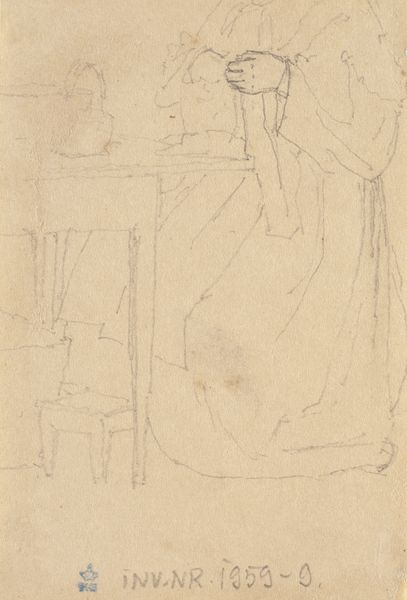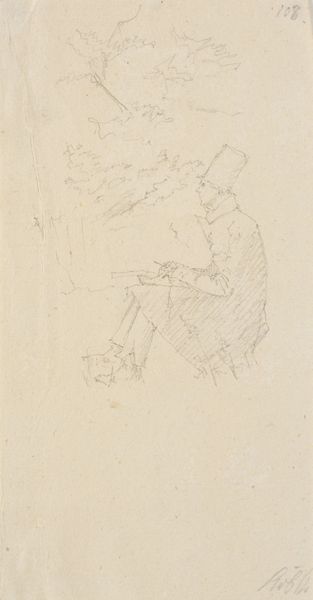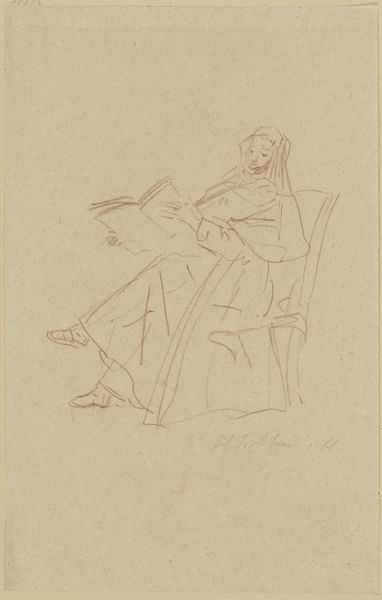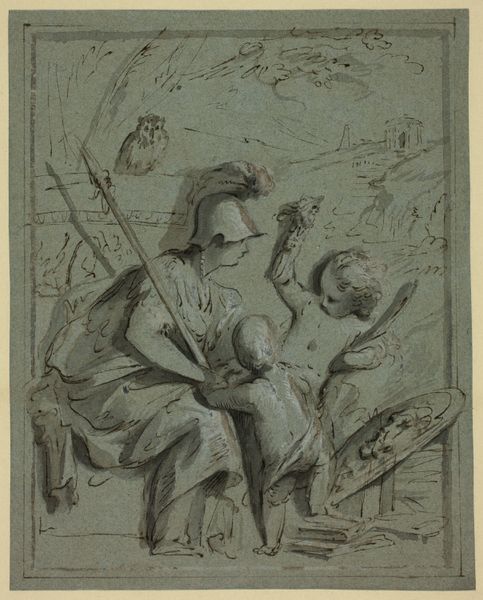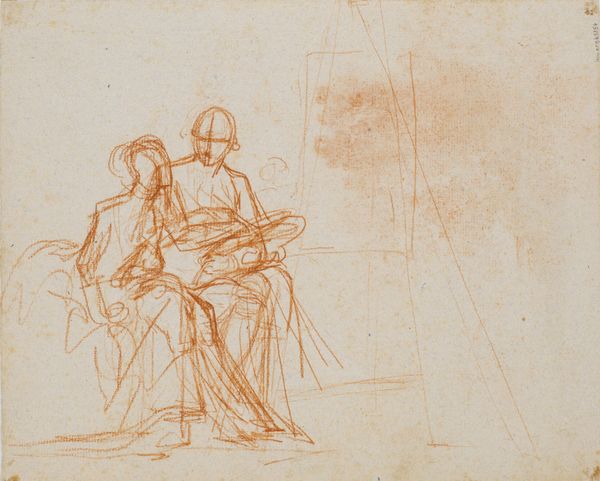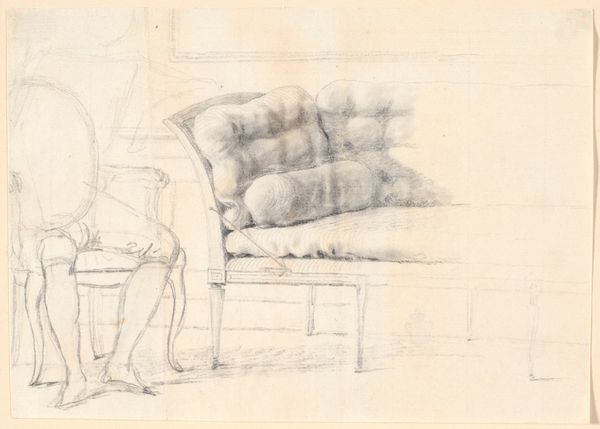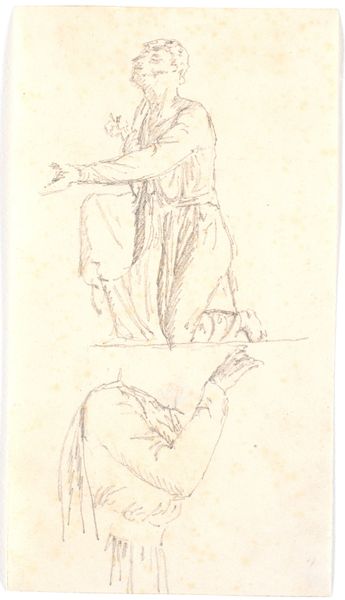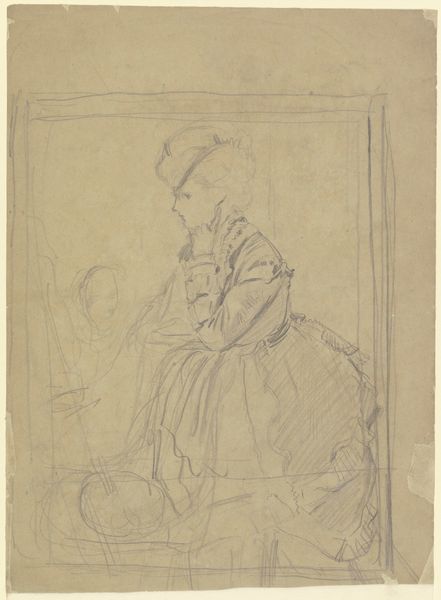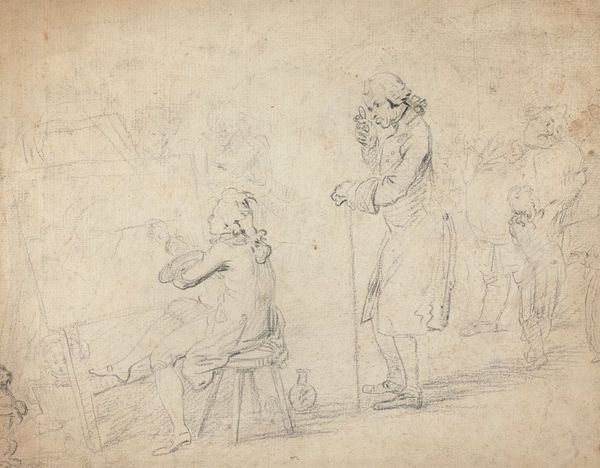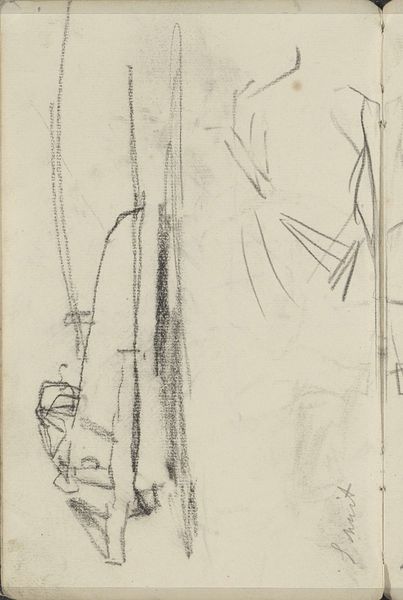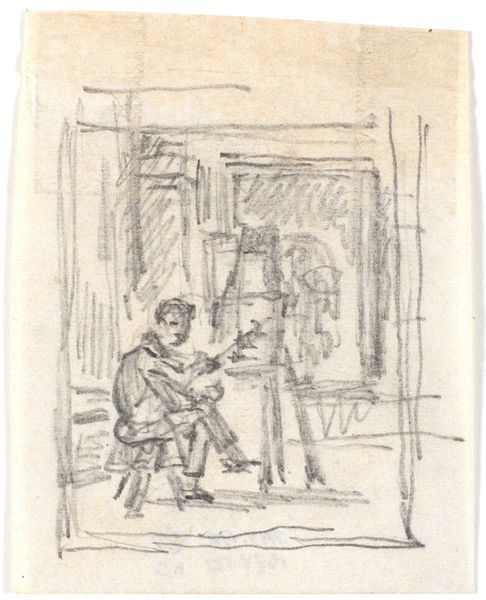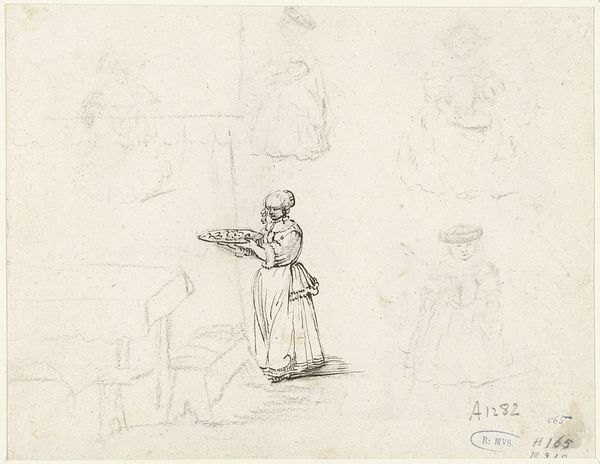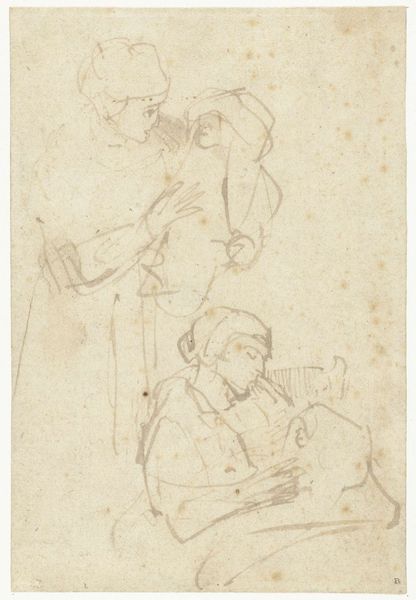
drawing, paper, ink
#
portrait
#
drawing
#
self-portrait
#
baroque
#
figuration
#
paper
#
ink
#
line
#
genre-painting
#
realism
Copyright: Public Domain: Artvee
Curator: We are looking at a 1630 drawing by Rembrandt van Rijn entitled "An Artist in His Studio". Editor: My immediate impression is one of stark, almost unsettling self-awareness. The artist has turned his gaze inward, capturing the act of creation itself, rather than a finished product. It is sparse, incomplete even. Curator: Indeed. Note the artist's deft use of line, the dynamism he coveys using seemingly few strokes of ink on paper. Observe how he structures the composition with the dominating shape of the easel. This becomes an exercise in perspective. Editor: But who is this artist and where does he stand? Is he simply portraying an artist at work, or something more? Placing the artist so centrally raises issues around class, accessibility, the commodification of art. Curator: Surely, Rembrandt seeks to explore the essence of artistic labor itself. Observe the attention to detail. His palette. He uses a realistic rendering. The realism points to broader explorations within the Baroque style, concerned with naturalism. Editor: The large shape dominating the top left appears ambiguous, but potentially obscures some type of curtain in the studio. This obscuration itself serves as commentary on how the social or domestic can weigh down on one's artistic liberty or studio practice. His figure appears to be confined by it, hemmed in. Curator: He directs the eye. Line becomes its own subject. Consider the formal elements; the hatching and cross-hatching that provides shape and depth. See, this technique renders three-dimensionality on the otherwise two-dimensional picture plane. Editor: We also might interpret the scale differently when looking at other art historical precedence, or a more modern critique about artists themselves as 'objects' to be looked at, rather than agents of creative change. Curator: Such close observation is crucial; only through careful contemplation of its inherent formal qualities can the artwork truly be understood. Editor: And yet, the meaning continues to evolve, shaped by contemporary eyes encountering a historical narrative, challenging static definitions of 'the artist' and studio.
Comments
No comments
Be the first to comment and join the conversation on the ultimate creative platform.
